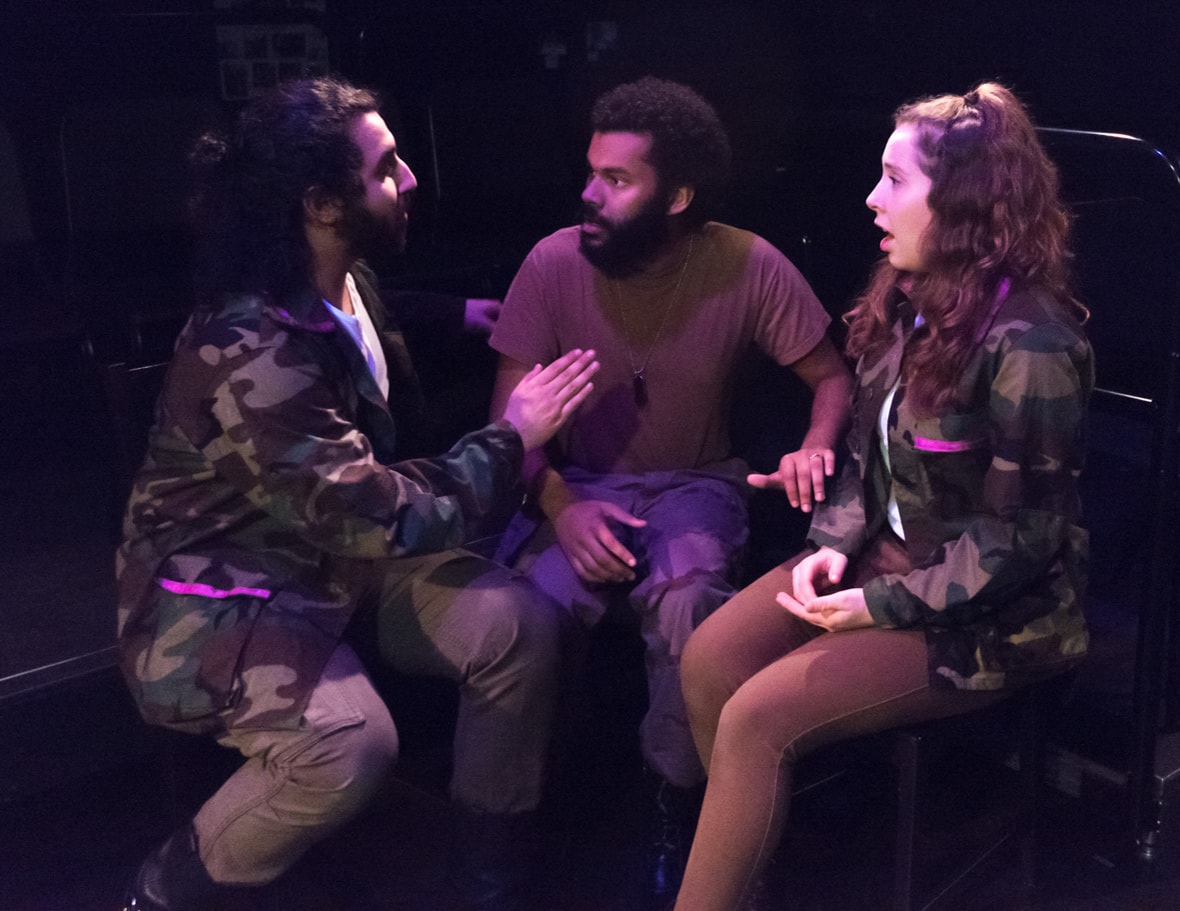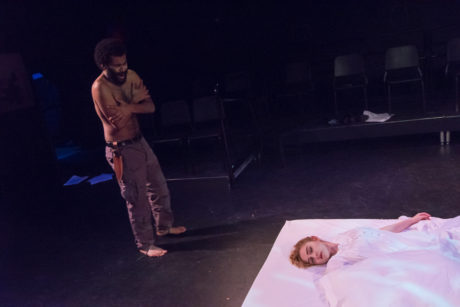A play like Othello raises many questions in the minds of theater-lovers: Should art be recuperative? Should plays written long ago be redeemed to suit the tastes of modern-day audiences? Othello is a play that at times both frustrates and interests the viewer, but it is a play that Caleen Sinnette Jennings, Professor of Theatre in American University’s Department of Performing Arts, has grappled with over several years and has directed with aplomb.

Jennings, who also wrote the play Casting Othello, produced at the Folger Theatre in 1998, wrote in her Director’s Notes: “This play and the walls of this theatre reflect my journey with this play. I continue to work on active ways to heal our campus after its own series of painful racial incidents.”
Jennings was able to get her cast to play Shakespeare’s ugly and beautiful beats–holding nothing back. Black Shakespeare scholar Ayanna Thompson has gone on record as saying the play should not be produced. There’s so much ugliness in the text, that Dramaturg Julia Harris had to have worked overtime to find elements within it to make it redeemable to 21st-century audiences. Indeed, the play was written a few years after Queen Elizabeth wrote, in an open letter to the Lord Mayor of London in 1596, “there are of late divers [various] blackmoores brought to this realme, of which kind of people there are allready here to manie.”
With Composer/Solo Saxophonist Joshua Adewole Kerobo’s notes playing in the background, the cast played out Shakespeare’s tale of the African general Othello, brought down by the “green-eyed monster” of jealousy, and partially by the two-faced to the nth-degree Iago, who used race and rumor as weapons.
In the stadium-seated (two opposing bleachers with open ends) black box space, Set Designer Gabe Hultberg’s portable, wood-and-canvas flats were carried in and moved about during various scenes by the cast. Jennings made a bold choice–which I can’t say I agree with–to have two actors, Emma Hooks and Peter Mikhail play Iago. In many scenes, Hooks and Mikhail circled each other and spoke in tandem, as if to lend greater effect to Iago’s evil duplicity. I liked Jennings’s use of the chorus to recite Othello’s lines in a stage whisper, more than I liked the male-female Iago team. The choral stage whisper was used to greatest effect during Othello’s “It is the cause, it is the cause my soul,” speech in Act 5, Scene 2.
Seth Andrew Watring took his portrayal of Othello from disciplined military man to jealousy-crazed lover, all while deftly handling Shakespeare’s verbally dense language. Watring’s scenes with the lovely Elizabeth Morton, as Desdemona, were acute in their intensity. Jennings was smart to move Watring and Morton around the small, black-box floor so that various audience members could take in every line and facial expression up close.

Red-shirted, saucy Bianca, the harlot-lover of Cassio, lieutenant to Othello, was played by the scene-thieving Grace Walker. Her jealous fits and fights with Cassio–in converse to Othello’s repressed anger–brought a relatable element to the play. Walker was enjoyable to watch.
Jivv Vickram Katikaneni played the beats of Cassio’s character well. Catherine Dionne Ashley played Iago’s wife Emilia with passion and intensity.
The character Roderigo was a “gull,” a gullible fellow, played along those lines by Jonathan Santoro. Desdemona’s mother (a man in the original text), a Venetian senator named Brabantia, was played with authority by Megan Ann Robbins.
Fight Choreographer Robb Hunter made the knife play and fist fights convincing. Costume Designer Robin Weiner gave much of the cast military camo jackets.
This is a long play; it didn’t reach intermission until an hour and 45 minutes in, but thanks to the directing and acting, you won’t notice. Be on the lookout for Mrs. Jennings’ future directorial efforts.
Running Time: Three hours, with a 15-minute intermission.
Othello played through March 3, 2018 at American University’s Studio Theatre in the Katzen Arts Center – 4400 Massachusetts Avenue, NW, in Washington, DC. For tickets to future American University theatre events, call the box office at (202) 885-3634 or purchase them online.





Why did you wait until after the show closed to post this? Now I can’t go see it.
Very good question! The answer is that it was a very short run: Only one weekend. We saw it, wrote it, and published it as soon as we could and are thrilled that the review made you want to see it!